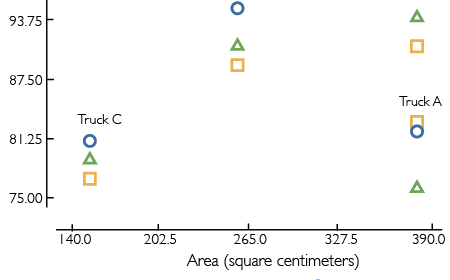The objective of this study is to investigate the effects of design decisions on the accommodation afforded by long lifetime products over extended periods of time, and to then make recommendations to improve accommodation. Phenomena such as rising obesity rates, aging, and changes in user demography can affect the spatial and the physical requirements of the user population. As a result, products with long lifetimes must be robust to these secular and demographic trends. For example, heavy (e.g., Society of Automotive Engineers (SAE) Class B) trucks are often used for decades. Changes in the size and the shape of truck drivers and in the percentage of female truck drivers have placed unanticipated demands on older trucks and forced designers to predict future needs. This work concludes that for changes related to secular trends (e.g., increasing obesity and stature), products that work well for current populations are the most likely to be robust to the needs of future ones. However, changes in user demographics (i.e., different proportions of race, ethnicity, and gender) are more likely to be problematic.

